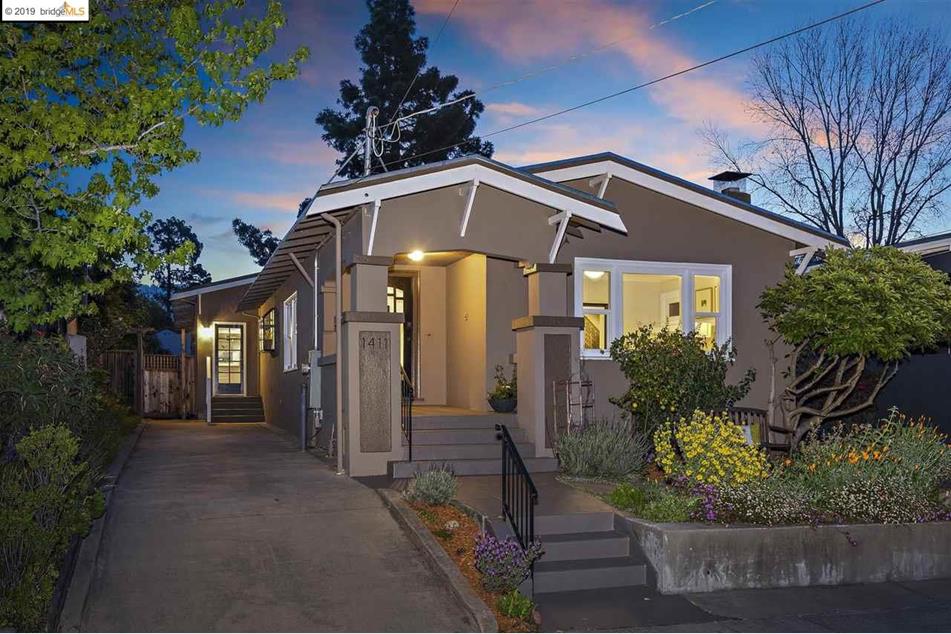
You may have heard that the Bay Area real estate market has veered into the crazy zone and about the nutty prices that buyers are shelling out for shelter. Not too long ago, that seemed like something happening far away — maybe down in Palo Alto, the cradle of Silicon Valley and all its wealth, where we used to hear stories about modest old bungalows being purchased for millions just to be knocked down and replaced by something grand, or at least big.
Well, the irrationality — I won’t try to diagnose the causes right now, or comment on the unsustainability or the fact it has made my own neighborhood a place neither we nor our kids could possibly afford if we were buying now — has shown up right on our street. We’ve lived here since the late ’80s after a house turned up that owners were selling “as-is” and we were able to scrape up a down payment with help from my parents and my wife’s employer. I can’t tell you how lucky we felt to be able to do it.
Late in 2017, a house that had been in the same family for more than half a century went on the market. The specifics: two bedrooms, one bath, a little under 1,300 square feet. A relative of the elderly owners, who had passed away, traveled back and forth from Southern California to update the house, which looked nice when the “for sale” sign went up.
The asking price: $875,000. Now, it’s understood that in this market that figure was a fiction, one meant to attract attention and leave plenty of room for the price to be bid up. Friends who long ago lived on the street were interested because their daughter was looking for a place. They have some resources, but were not optimistic that they’d win the bidding war, which they were certain would go well over $1 million. As a last resort, they wrote a letter to the sellers about their past connection to the street.
I’ll bet it was a nice letter, but they needn’t have bothered. The little bungalow sold for $1,650,000 . Nearly double the asking price and well beyond the offer they stretched themselves to make.
Once you’ve seen that happen, it’s not surprising when it happens again. And since early last year, sales in the $1.5 million range have become commonplace in the surrounding neighborhood. Not that that’s the limit: Earlier this year, a nicely redone home a couple blocks from us — four bedrooms, three baths — sold for $2.8 million. The agent sent a flyer around after the sale that bragged the home had attracted five all-cash offers — including one from the eventual buyer — that were over the $1.8 million asking price. (Did I bury the lede there? The house sold for $1 million over that original price, which today is better thought of as a reserve price, a minimum acceptable bid in what is understood to be an auction.)
And this keeps happening. A month or so ago, another home on our street — next door to the one that sold last year for $1.6-million plus. I found the sales history: In 2003, the long-time owners sold the home, which was then probably two bedrooms and one bath, for $550,000. I’m guessing they felt they made out all right on the deal.
In 2015, the house, which I believe was at least modernized by the interim owners, sold for $985,000. High, perhaps, but in the current situation not insane-sounding. The new buyers added a 500-square-foot addition — a master bedroom and full bath — and remodeled the kitchen. A couple of months ago we ran into the owners, who still seemed like newcomers to the neighborhood, on what happened to be their last night in the house before they moved to Copenhagen.
The house was staged for the sale, the sign was posted out front, and I believe the bidding began at $1,395,000. How high did it go? The sale became official just yesterday. The price was $2,050,000.
As it happens, I crossed paths yesterday morning with a real estate agent who was putting up a sign for an open house. I said hi, and he responded with a bright, “Want to buy a house?”
“Ha!” I said. “Not in this neighborhood. You know that story.”
“Keep saving your pennies,” he said. “Maybe someday you can.”
